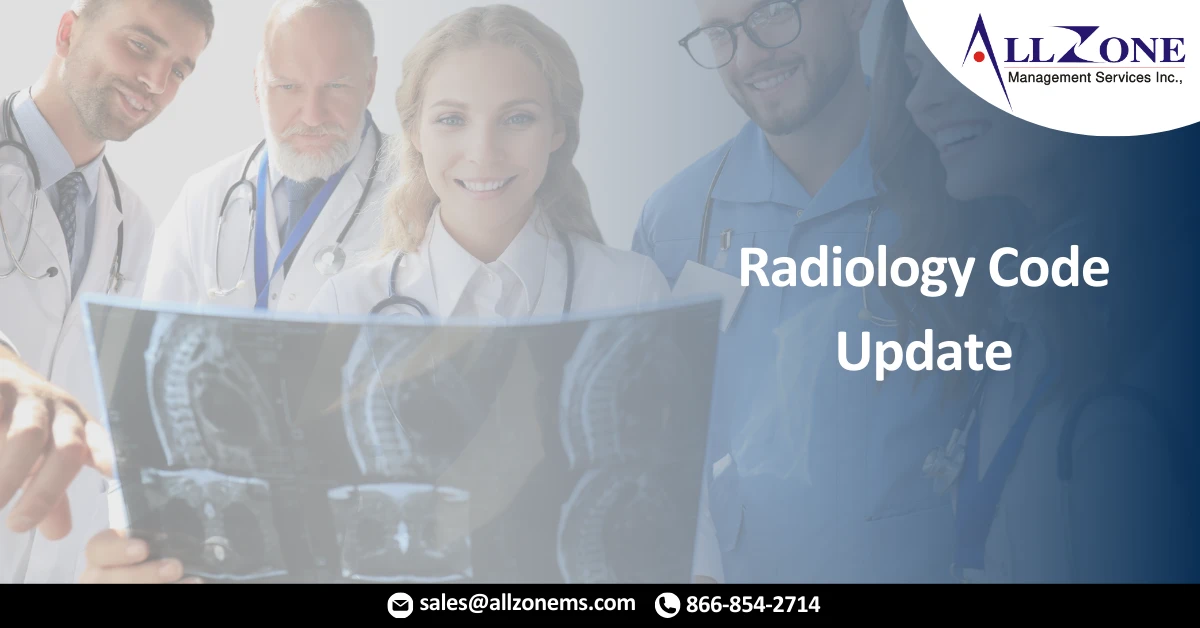Quite a few code changes and revisions were made to the Radiology Code section of CPT Code for 2020. Less confusing language and expanded code categories will make life easier for medical coders. Here’s a quick review.
Gastrointestinal System
A mini overhaul of the gastrointestinal system codes removed the confusing language of “with or without KUB” and now specifies that a scout film is included when performed. The codes in this section are now based on whether single or double contrast was used. The previous small bowel follow-through codes are deleted and replaced with add-on code +74248 Radiologic small intestine follow-through study, including multiple serial images (List separately in addition to code for primary procedure for upper GI radiologic examination).
| Gastrointestinal System | Single Contrast | Double Contrast |
| Esophagram | 74220 | 74221 |
| Upper GI | 74240 | 74246 |
| Small Intestine | 74250 | 74251 |
| Colon | 74270 | 74280 |
Nuclear Medicine
As in previous years, the Nuclear Medicine section in CPT® required updates this year, as well. New and existing myocardial PET codes were revised to include ventricular wall motion and ejection fraction, when performed. Six new myocardial PET codes were added for metabolic evaluation, perfusion, or both, with options for both PET and PET/CT.
| Myocardial | Metabolic Evaluation | Perfusion | Both |
| PET – single | 78459 | 78491 | n/a |
| PET/CT – single | 78429 | 78430 | n/a |
| PET – multiple | n/a | 78492 | 78432 |
| PET/CT – multiple | n/a | 78431 | 78433 |
Category I code 78434 Absolute quantitation of myocardial blood flow (AQMBF), positron emission tomography (PET), rest and pharmacologic stress (List separately in addition to code for primary procedure replaces deleted Category III code 0482T. This new code is for quantitation of myocardial blood flow at rest and stress, and is reported with codes 78492 and 78431.
Be sure to check out the revisions made to existing codes 78800, 78801, 78802, 78803, and 78804 for tumor localization by specifying them as planar, and the new codes for SPECT and SPECT/CT.
Many of the existing body specific codes were deleted in lieu of codes for single area or two or more areas done either in one day or over two or more days. Two notable exceptions to this change are imaging of the parathyroid and myocardial imaging.
| Nuclear Medicine | Planar | SPECT | SPECT/CT |
| Single area | 78800 | 78803 | 78830 |
| Multiple areas | 78801 | 78831 | 78832 |
| Whole body, single day | 78802 | n/a | n/a |
| Whole body, 2 or > days | 78804 | n/a | n/a |
All of these codes include vascular and blood pool imaging, when performed. A new add-on code, +78835 Radiopharmaceutical quantification measurement(s) single area (List separately in addition to code for primary procedure), has been added for radiopharmaceutical quantification measurement(s), single area. You may report this code more than once only if the provider performs the service on more than one area.
Other changes outside of the 70000 series that may affect radiology code include continued bundling of radiological guidance into primary procedures. For example, two new lumbar puncture codes, 62328 and 62329, bundle fluoroscopic and CT guidance. For those who work in vein clinics, be aware that the global surgical period for stab phlebectomies, 37765 and 37766, are reduced from 90 days to 10 days. The RVU value for these procedures is also reduced.
Duplex scan for arterial inflow and venous outflow for preoperative vessel assessment prior to creation of hemodialysis access, formerly reported with HCPCS Level II code G0365, has been assigned two CPT® codes: 93985 Duplex scan of arterial inflow and venous outflow for preoperative vessel assessment prior to creation of hemodialysis access; complete bilateral study for complete bilateral study and 93986 Duplex scan of arterial inflow and venous outflow for preoperative vessel assessment prior to creation of hemodialysis access; complete unilateral study for complete unilateral study. To be considered a “complete” study, the documentation must include both arterial inflow and venous outflow. These codes can be used for either upper or lower extremities and, unlike the G code, can be used for either initial or subsequent studies.
Radiology code interacts with so many specialties that it is important to understand coding changes to order and/or preauthorize the correct codes.
For More Information: https://www.aapc.com/blog/49696-radiology-code-update-for-2020/

